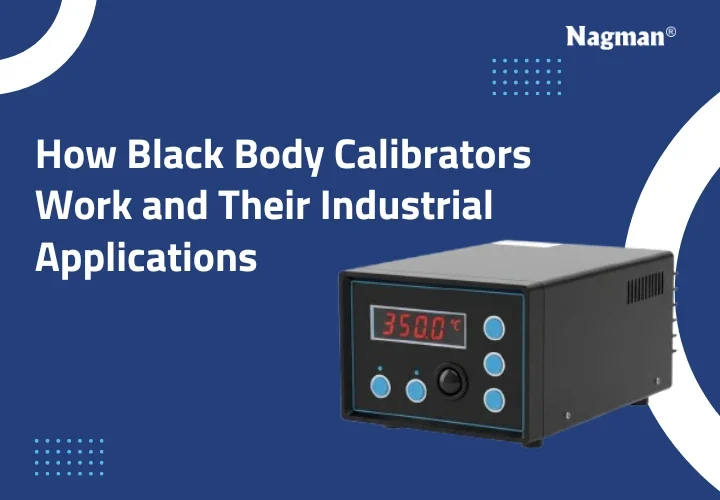The temperature measurement instrument used is vital in various industries, especially where accuracy and consistency are non-negotiable. The black body calibrator is one of the most potent instruments because it is specially designed to calibrate temperature sensors and infrared thermometers by emulating the ideal thermal radiation source.
This blog discusses the calibration of a black body, its unique properties, and its comparison to other types of calibrators for temperature measurement instruments.
What is a Black Body Calibrator?
Black body calibrators are temperature calibration devices used to model a hypothetical black body – a surface that absorbs all incident thermal radiation and emits the maximum possible radiation at a specific temperature. They are particularly handy for calibrating non-contact infrared thermometers and thermal imaging devices.
The key advantage of black body calibrators is that they provide a highly stable and uniform radiating surface, which is important for precise temperature measurements and instrument calibration.
Working Principle of Black Body Calibrators
Black body calibrators work on the concept of black body radiation. The equipment uses a high emissivity (near 1.0) surface, which has been heated to an exact temperature. This causes the surface to act as an actual black body since it emits thermal radiation, thus becoming a reference point for calibrating infrared temperature sensors.
The internal heating system is also controlled by high-precision temperature controllers for stable and uniform heat distribution. Thermal cameras or IR thermometers are then pointed at the radiating surface, and their measurements are read and adjusted accordingly.
Types of Temperature Calibrators
The two most commonly used types are:
Dry Block Temperature Calibrator: A dry block temperature calibrator is a compact and portable instrument that uses a metal block with drilled wells for different types of temperature sensors, such as RTDs and thermocouples. It can heat or cool the block to a specific set point, allowing temperature probes to be calibrated with direct contact. These calibrators are suitable for both on-site and laboratory applications in which contact temperature sensors are tested.
Black Body Calibrator: Black body calibrators are a calibration tool for non-contact infrared sensors. It has a radiating surface or cavity that mimics black body radiation, allowing users to test and calibrate infrared thermometers or thermal imagers without touching the surface. It is especially useful in applications where the use of contact-based calibration is not viable due to hygiene or high-temperature conditions.
Industrial Applications of Black Body Calibrators
Black body calibrators are used across various industries due to their accuracy and versatility. Some key sectors include:
Pharmaceuticals and Biotechnology: For maintaining precise temperatures during storing and formulating drugs.
Food and Beverage: Ensuring cooking, processing and storage temperatures.
Aerospace and Defence: Calibrating the thermal sensors used in aircraft and satellites.
Manufacturing: Measuring and controlling temperature sensors in automated production lines.
Energy and Utilities: Testing infrared thermometers is used for thermal mapping of transformers, pipelines and reactors.
Healthcare and Medical Devices: Thermal scanners and infrared thermometers are used in diagnostic equipment.
Benefits of Using Temperature Calibrators
There are a number of practical advantages to investing in trustworthy temperature calibrators:
Accuracy: This provides a precise calibration, which minimises measurement errors.
Compliance: Ensures that industry standards and regulations are met.
Reliability: Increases the durability and reliability of temperature measuring devices.
Efficiency: Saves time and resources through in-house calibration.
Versatility: Available in various formats so that it can be used for both non-contact and contact calibration.
Black Body Calibrator vs Other Temperature Calibration Methods
When comparing black body calibrators with other calibration techniques, e.g., liquid baths or dry blocks, it is important to note that they are suitable for non-contact equipment. Although a dry block temperature calibrator works well with traditional sensors that need physical contact, it cannot be applied to calibrate IR thermometers or thermal imagers.
Conversely, liquid baths have good thermal stability but are less convenient because of maintenance needs and the risk of contamination. Black body calibrators are cleaner and less complicated to use and provide predictable performance in non-contact calibrations.
Conclusion
Industries which require precise temperature control rely heavily on the black body calibrator and its uses. These devices not only enhance the precision and dependability of non-contact temperature detectors but also provide operational safety and compliance across industries. Choose the right device to stay ahead with calibration instruments and make sure every reading counts.






